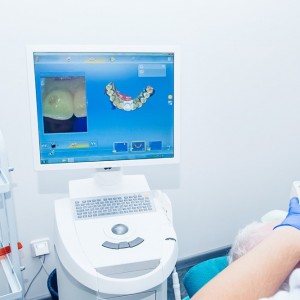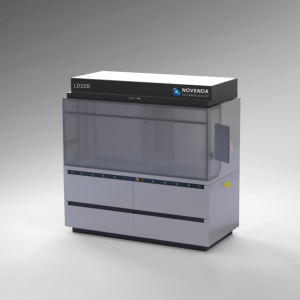
Chairside VS lab-based methods for single-crown manufacturing: an analysis of accuracy, speed and cost
Lorenzo Breschi
Digital technology has revolutioned prosthetic dentistry. The advent of intraoral scanners and CAD-CAM softwares has changed the impressions taking and the restorations design with new materials being developed for digital fabrication. Traditionally, prosthetic restorations were fabricated in the laboratory or chairside, but additive manufacturing is becoming increasingly popular among clinicians. Even with the advent of these materials, the marginal accuracy of these restorations is still unknown. Ensuring an accurate fit is critical to avoid problems such as sensitivity or bacterial infiltration. This study aimed to evaluate the accuracy, fit, and cost efficiency of chairside single crowns (SC) compared with traditional methods.
Materials and methods
A plaster model with a prepared tooth (#1.5) was scanned with an industrial scanner, and an SC was designed in computer-assisted-design (CAD) software. SCs (n=10) were printed with a hybrid composite (additive chairside) and a stereolithographic (SLA) printer (Dfab®), 10 SCs were milled in lithium disilicate (subtractive chairside) using a chairside milling unit (inLab MC XL®), and 10 SCs were milled in zirconia (lab-based) using a five-axis laboratory machine (DWX-52D®). All SCs were scanned with the same scanner after polymerization/sinterization. Each scan was superimposed to the marginal area of the original CAD file to evaluate trueness: absolute average (ABS AVG), root mean square (RMS), and (90 ̊–10 ̊)/2 percentile were calculated for each group. Marginal adaptation and quality of the occlusal and interproximal contact points were also investigated by two prosthodontists on 3D printed and plaster models. Finally, the three workflows’ time efficiency and costs were evaluated.
Results
Additive chairside and subtractive lab-based SCs had significantly better marginal trueness than subtractive chairside SCs in all three parameters (ABS AVG, p < 0.01; RMS, p < 0.01; [90 ̊–10 ̊]/2, p < 0.01). However, the two prosthodontists found no significant differences between the three manufacturing procedures in the quality of the marginal closure (p = 0.186), interproximal (p = 0.319), and occlusal contacts (p = 0.218).
Conclusions
The three fabricating methods investigated provided highly accurate marginal adaptation. The additive chairside process in particular showed comparable results to traditional subtractive methods, indicating its potential for producing definitive restorations. Both time efficiency and cost trends favored the chairside additive workflow. Nevertheless, further research is needed to confirm these findings and examine the effects of digital fabrication in dentistry.
Mangano FG, Cianci D, Pranno N, Lerner H, Zarone F, Admakin O. Trueness, precision, time-efficiency and cost analysis of chairside additive and subtractive versus lab-based workflows for manufacturing single crowns: An in vitro study. J Dent. 2024 Feb;141:104792. doi: 10.1016/j.jdent.2023.104792. Epub 2023 Nov 25. PMID: 38013004.
 Related articles
Related articles
Restorative dentistry 01 July 2025
Advances in CAD/CAM Technology for Chairside Restorative Dentistry: A Workflow Analysis
Chairside CAD/CAM technology has revolutionized restorative dentistry, offering streamlined workflows and improved patient outcomes.
Restorative dentistry 24 January 2025
The aim of this review was to update the literature with regard to the digital methods available by CEREC Chairside system to register and design the occlusion, to report their efficacy and technical...
News 04 October 2021
The CAD software company, exocad GmBH, has launched its newest offering with the ChairsideCAD 3.0 Galway which lets dentists keep treatment to a single visit. The software system provides a range of...
Digital Dentistry 17 June 2020
Co-authors: A. Comba, F. Del Bianco
In recent years the use of chairside CAD/CAM ceramics restorations has rapidly increased. The choice of materials includes zirconia-reinforced lithium silicate...
As sugar consumption rises and dental visits become increasingly expensive, nearly 3.5 billion people worldwide struggle with oral diseases
 Read more
Read more
Much like EMTs rushing to the scene after an accident, stem cells hurry to the site of a skull fracture to start mending the damage. A new finding has uncovered the signaling mechanism that triggers...
Products 05 November 2025
SimplyTest has launched a groundbreaking saliva-based test to detect high-risk strains of oral human papillomavirus (HPV), a major cause of oropharyngeal cancers.
News 05 November 2025
Perimetrics, Inc., a dental technology company pioneering quantitative diagnostics, announced today that the U.S. Food and Drug Administration (FDA) has granted clearance for the InnerView...
News 05 November 2025
On October 15, open enrollment for Medicare began nationwide. Hundreds of thousands of seniors in New Jersey will once again face the challenge of finding the right Medicare coverage, including the...
Digital Dentistry 04 November 2025
Digitalisation is an expanding field in dentistry and implementation of digital teaching methods in dental education is an essential part of modern education.















